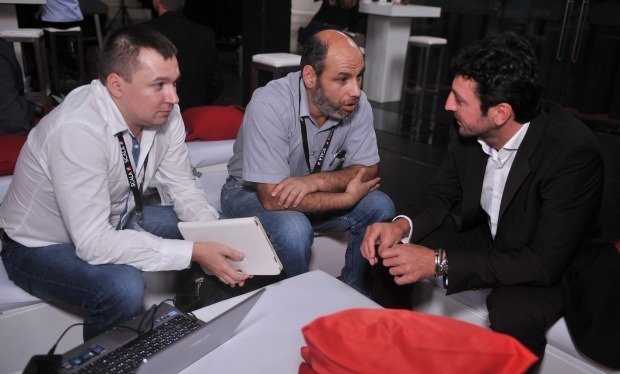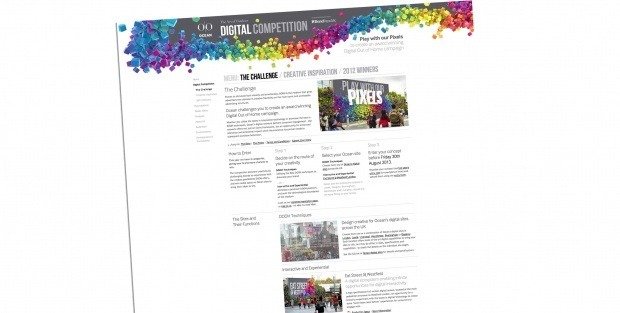We learn to play before we walk or even before we talk. Games give us a thrill, not just due to the interaction involved, but also the reward at the end of them. Playing games, however, is not just for children: in advertising it is something that is proven to drive interaction.
Gamification is becoming increasingly used by brands as a tool to raise awareness and engage with customers at a deeper, more memorable level. One of the great enablers for gamification is digital technology, through computers, interactive screens and mobile.
“Game playing is a vital way that advanced animals learn and develop, and is therefore an inherent human behaviour,” believes Richard Simkins, Talon Outdoor’s innovations director. “Advertisers have found that ‘gamified’ content helps people to quickly learn about new products and to change their feelings towards established brands.”
Sam Bird, director of production and creative solutions at JCDecaux Innovate, agrees, saying that, with the growth of DOOH networks, games are just a natural progression for advertising: “Younger audiences are not afraid of screens; it is second nature to them. Yet older people, even if they just watch the games being played by others, can also become hooked.”
Obviously, brands are not just trying to give customers a good time: they want to learn about them and reach out to them with new offers. They want big data and gamification is one way of enabling this. As Bird points out: “We found that, when people are offered a reward at the end of an exchange, they are more than willing to part with personal information.”
MediaCo Outdoor’s new CityLive network in Manchester is a prime example of touchscreen technology mingling with everyday life, while offering a chance to play at the same time.
“The catalyst for this increase in brands using games to communicate is social media and sharing, particularly through mobile,” opines Richard Blackburn, commercial director at MediaCo. “Consumers do not want brands shouting in their faces; they want to engage with brands on their own terms. It is imperative for brands to weave their existence into the lives of consumers in ways that are positive, which add value to consumers’ lives and reward their involvement. Compelling and addictive games are a great way to broaden brand reach and make it memorable, therefore increasing brand loyalty.”
For a gamified campaign to succeed, location is key. Dan Dawson, director of creative and technology at Grand Visual, suggests: “Creating fun and participatory campaigns is a great way to incentivise people to connect with DOOH screens. It is particularly effective in locations where average dwell time is high, such as shopping centres, train stations and airports.”
Media owners keep investing in cutting edge technology, but who is driving gamification adoption in OOH? Brands have been using online games to capture people’s attention for quite a while, so taking it onto the streets and public spaces is just an extension of this. On the creative agency side, using games can tangibly surpass what has been done before and can provide companies with real information on how well the campaign is doing, justifying the initial investment.
“In our experience, creative and media agencies are the most enthusiastic about gamification strategies because they are typically exciting to develop and have been proven to deliver results,” believes Simkins. “In the context of OOH some of the most successful interactive campaigns have introduced an element of game playing – whether this is using interactive touch- or gesture-enabled digital screen in bus-shelters, games that turn your phone into a game controller for a huge public digital screen, or even a pure-play gamification platform like YourVine which creates out-of-home challenges for participants.”
In order to make the best out the game experience, a little help is sometimes advisable, suggests Nick Mawditt, director of insight and marketing at Talon: “We have found that when using emerging technologies such as Augmented Reality (AR) or gestural interactivity the presence of on-site brand ambassadors, who can explain the experience to customers, significantly helps to drive interactions and understanding. Gesture and AR technologies increase the functionality of an interactive experience and, amongst a core gaming audience, gesture technology meets the expectations of high performance.”
Gamification works for brands because it is a means by which they can connect with customers for longer and more meaningfully. Engagement hot spots are emerging in most metropolises and the technology is also widely available. What is now needed is more outstanding creative content that explores the possibilities of gamification across all platforms.



 Display products such as PsCo’s hyperwall have put digital signage companies at the fore of 4K development
Display products such as PsCo’s hyperwall have put digital signage companies at the fore of 4K development

 While the idea of facial recognition software alarms many, the reality is that the application is far more impersonal than is perceived
While the idea of facial recognition software alarms many, the reality is that the application is far more impersonal than is perceived

